The universe is packed with all sorts of interesting things from stars over 2,000 times the size of the sun to supermassive black holes that can rip celestial bodies asunder. Sometimes, it is easier to ponder the nature of things closer to us, like planets. Although our solar system is home to some massive planets, it’s only natural to wonder if we have spotted any bigger ones. That’s why we’re going to identify the largest planet in the universe.
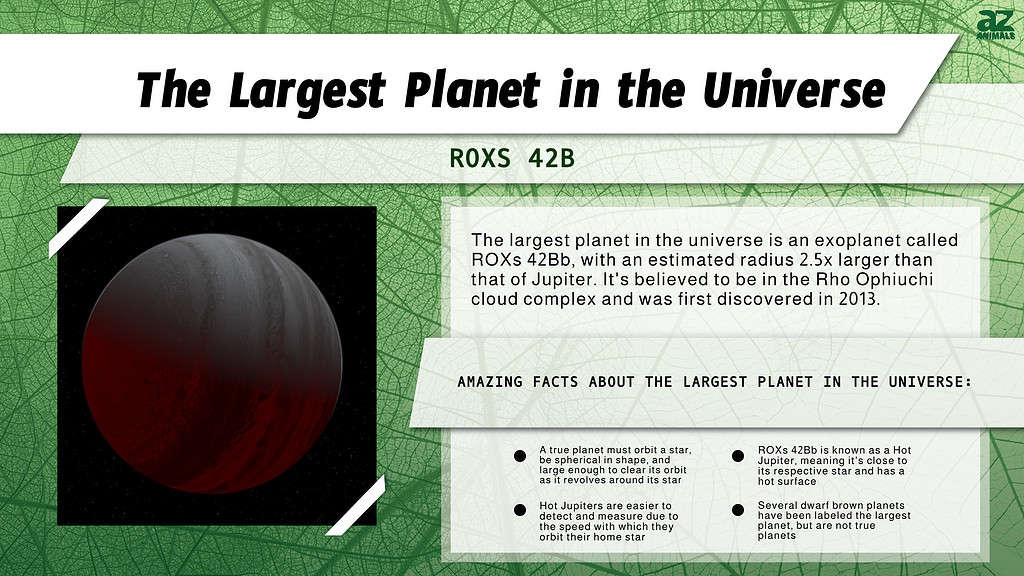
Let’s see where this planet is located, how large it is, and how it matches up to any of the planets in our neck of the woods.
What is a Planet?
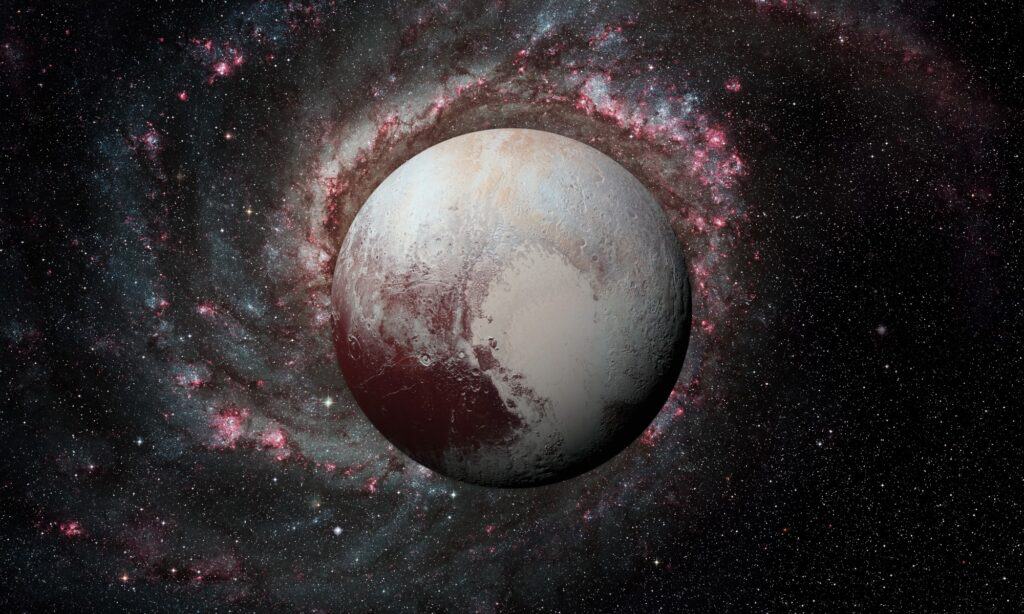
Although it was once considered a planet, Pluto is now classified as a dwarf planet.
©NASA images/Shutterstock.com
Although the answer to this question may seem very simple, we need a working definition to identify these celestial bodies. After all, Earth is very different from the gas giant Jupiter. Also, some “planets” may have properties of a planet but are actually remnants of stars.
Some definitions of the term planet are very blunt. They’ll say that a planet is merely the result of a disk accretion around a star. That doesn’t help us narrow down the definition for a discussion, though. Fortunately, we have a governing body to give us the easy answer.
According to the definition provided by the International Astronomical Union, a planet has three qualities or must do three things:
- Must orbit a star.
- Must be large enough to have gravity that forces it into a spherical shape.
- Must be large enough to clear its orbit as it revolves around its star.
This definition was controversial when it was introduced because it precluded Pluto from the list of planets in our solar system. Yet, this definition is very helpful because it eliminates some celestial bodies from contention.
Lastly, we have to consider the use of the word exoplanet. Simply put, an exoplanet is any planet that is outside of our solar system. On this list, the biggest planet is going to be an exoplanet.
Measuring the Largest Planet in the Universe
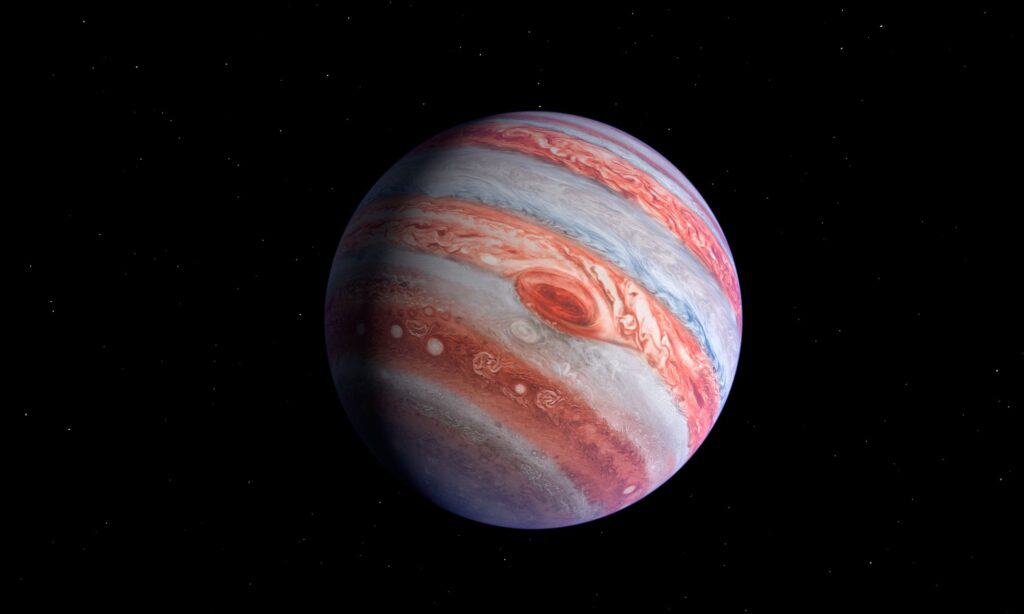
Jupiter’s radius is a preferred unit of measurement when discussing exoplanet size.
©joshimerbin/Shutterstock.com
Measuring objects that are far away in space is a difficult process that has the potential for inaccuracies. One method used to determine the size of planets is to measure the amount of light that a planet blocks as it transits a star.
When measuring a massive planet, scientists will typically use the radius of Jupiter as a unit of measurement. Jupiter has a radius of 43,441 miles, which is equal to 1 RJ. So, as we look at the largest planets, you’ll see this unit of measurement implemented.
Scientists determine the mass of a planet by looking at the changes in planetary speed as they approach nearby celestial bodies. With that information, they can determine the density of the planet and make educated guesses about its qualities.
What’s the Largest Planet in the Universe?
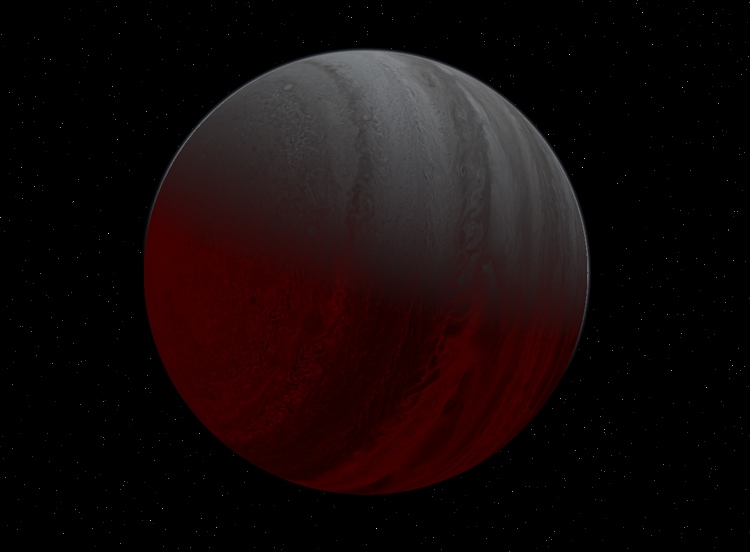
An artist’s rendering of a Hot Jupiter. The largest planet in the universe,
ROXs 42Bb, is a Hot Jupiter.
©Yves LC / CC BY-SA 3.0 – License
The largest planet in the universe is called ROXs 42Bb, and it’s believed to have a radius up to 2.5 times that of Jupiter or slightly more. This is a massive planet believed to be in the Rho Ophiuchi cloud complex, and it was first discovered in 2013.
This type of planet is known as a Hot Jupiter. In our solar system, Jupiter is quite far from the sun. It’s over 400 million miles away. Yet, ROXs 42Bb is close to its star and has a very short orbital period. That means its surface temperature is probably very high, hence the terminology applied to it.
Hot Jupiters are easier to detect and measure due to the speed with which they orbit their home star. ROXs 42Bb is almost certainly a planet, something that scientists cannot say with a great degree of confidence about some other candidates.
We’re going to list this planet as the largest, and also explain why some controversy exists with this decision.
Controversy About the Largest Planets
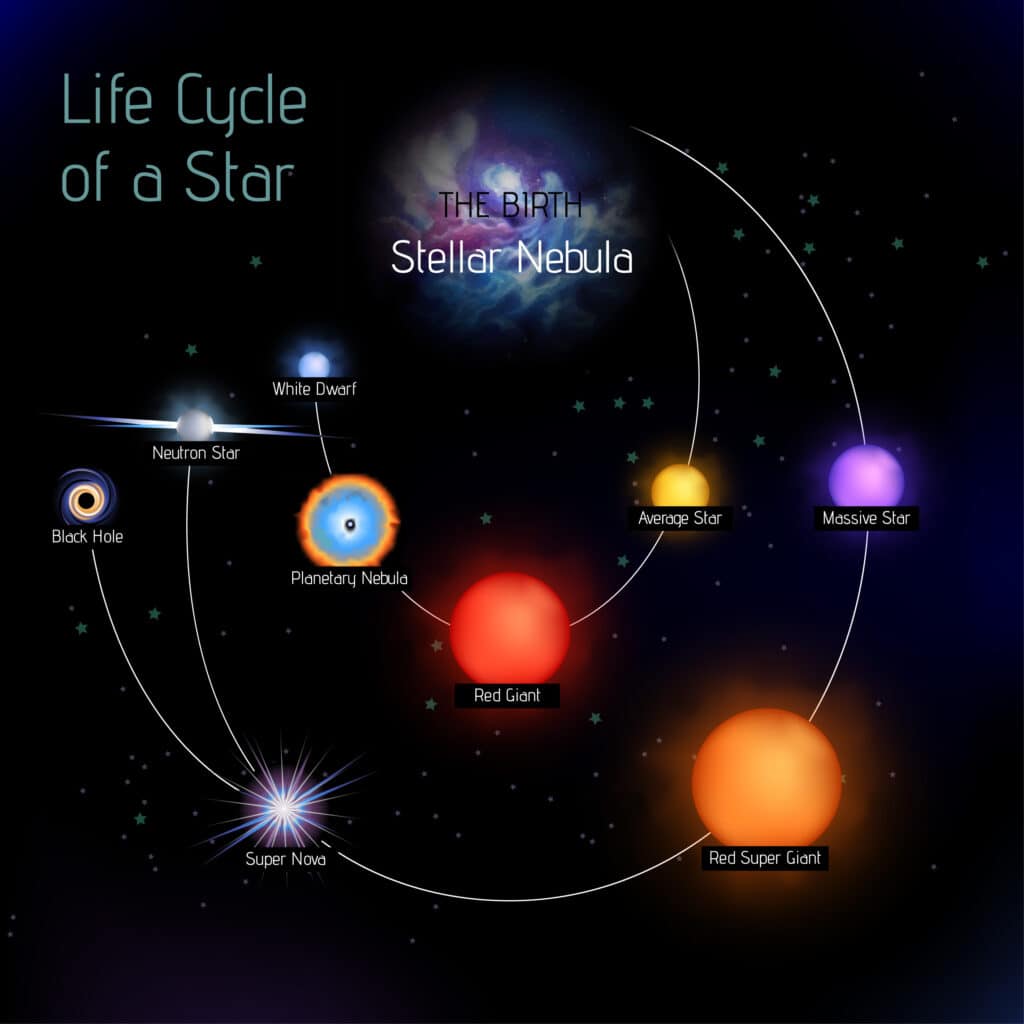
Brown dwarves are stars that fail to become main-sequence stars.
©Marusya Chaika/Shutterstock.com
Some of the candidates for the largest planet in the universe are not believed to be true planets at all. For example, an exoplanet called HD 100546 b is a celestial body with a radius of 6.9RJ. Yet, the mass of this planet and other factors seem to indicate that this exoplanet is actually a brown dwarf.
A brown dwarf is an object that is somewhat between a planet and a star. They are much larger than typical planets, but these stars did not gain enough mass to start nuclear fusion of hydrogen in their cores. Thus, brown dwarfs are failed stars but still remain incredibly large throughout most of their life cycles.
Several of these brown dwarves have appeared on the list of largest planets in the universe. However, they are not true planets. For our purposes, we decided to award the first place on this list to a planet that is almost certainly a planet, like ROXs 42Bb rather than mistakenly award it to a brown dwarf.
However, this list is bound to change as new planets are discovered. Furthermore, additional examination of planets and brown dwarves might reveal new data. We could discover that what was once thought to be a brown dwarf is a planet or vice versa.
What is the Largest Planet in the Solar System?
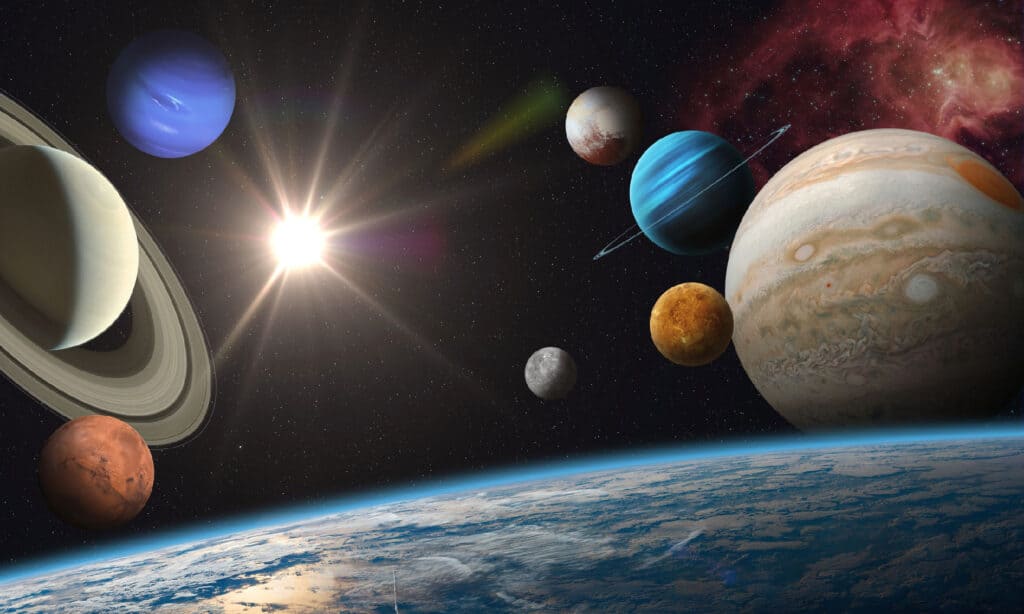
Jupiter is the largest planet in the entire solar system.
©iStock.com/buradaki
The largest planet in the solar system, the one containing Earth and the sun, is Jupiter. As we have already mentioned, this massive gas giant planet has a huge radius of 43,441 miles and a mass about 317 times that of Earth.
This planet is not a brown dwarf, though. The planet does not have the mass to be considered one. Most of the small brown dwarves we know about now are about 20% larger than the planet or much more. Jupiter is simply a very large gas giant.
Now that we know about the largest planet in the universe and how tenuous that title is, we encourage you to come back from time to time and see what’s changed. You never know when scientists are going to bring forth a new discovery. When that time comes, we’ll update the information so you can answer your nagging questions about the universe!
What Comes Next After Jupiter?
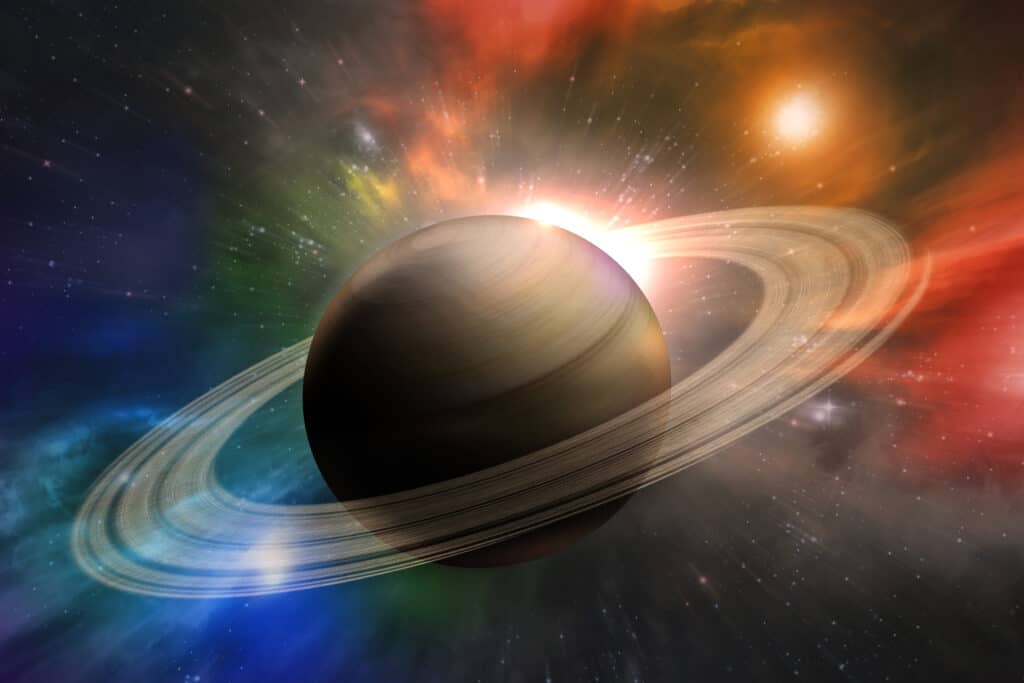
Saturn has 83 moons some of which are capable of supporting life
©iStock.com/EzumeImages
The second runner-up in terms of size is Saturn named after the Roman deity of agriculture. This immense planet is a gas giant, just like its bigger counterpart, and consists mostly of helium and hydrogen.
The planet is known for its beautiful rings and for its 83 moons, some of which are capable of supporting life such as Enceladus and Titan. With a diameter of 36,183.7 miles, Saturn is sixth in position away from the Sun’s warmth and is yet another that dwarfs our planet, Earth.
A perfect analogy would be a volleyball and a nickel with the former being the ball and the latter being the coin.
The photo featured at the top of this post is © joshimerbin/Shutterstock.com
Thank you for reading! Have some feedback for us? Contact the AZ Animals editorial team.






